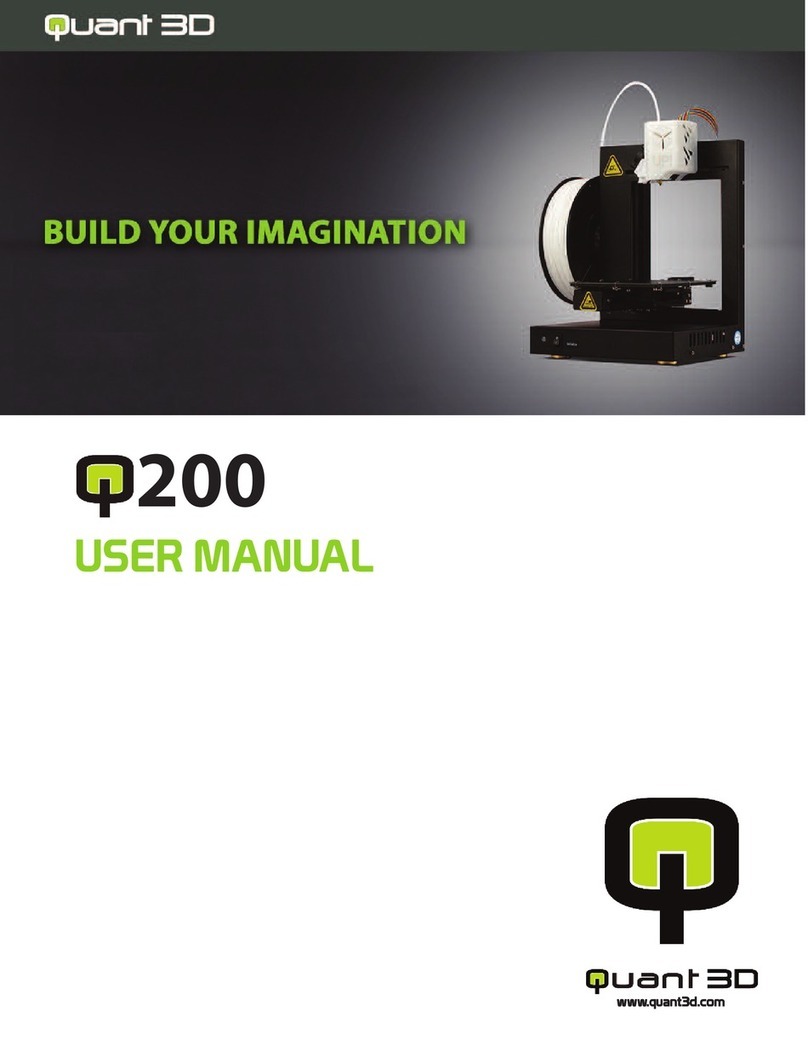
Precautions
1. The Q300 3D printer requires the power adapter provided by the original
manufacturer, otherwise the machine could become damaged or even cause a fire
hazard. Please also keep the power adapter away from water and out of high
temperature environments
2. During printing, the nozzle of the printer will reach 260°C and the print platform could
reach 100°C. Please do not touch these parts with your bare hands while they are
hot—not even with the heat resistant gloves included with the machine—as the
temperature could damage the gloves and injure your hands.
3. During printing, the nozzle and print platform will move at high speeds. Do not touch
these parts while they are moving.
4. Please wear goggles when removing the supporting material from models and
detaching models from the perf board.
5. When printing with ABS and PLA, the plastics will create a light odor. Please run the
printer in a well-ventilated environment. We also suggest you put the printer in an
environment with a stable temperature as unwanted cooling could cause adverse
effects to the print quality
6. When the UP software is sending data to the printer—indicated on the status bar on
the left bottom corner of the LED screen with the text "sending layers"—do not
unplug the USB cable as this will disrupt the data transfer and result in a printing
failure. The USB cable can be unplugged after the data transfer is finished.
7. The Q300's ideal working temperature is between 15°C and 30°C with a relative
humidity between 20–50%. It is recommended that you discharge any static charge
from your body before touching the machine to prevent an interruption while printing
and any potential damage to the printer.
Warning label on printer:
High Temperature, do not touch!
Warning label on printer:
Moving Parts, do not touch!





























